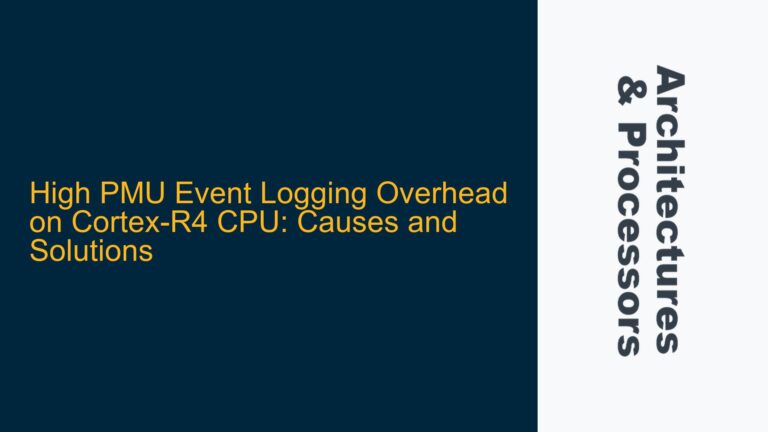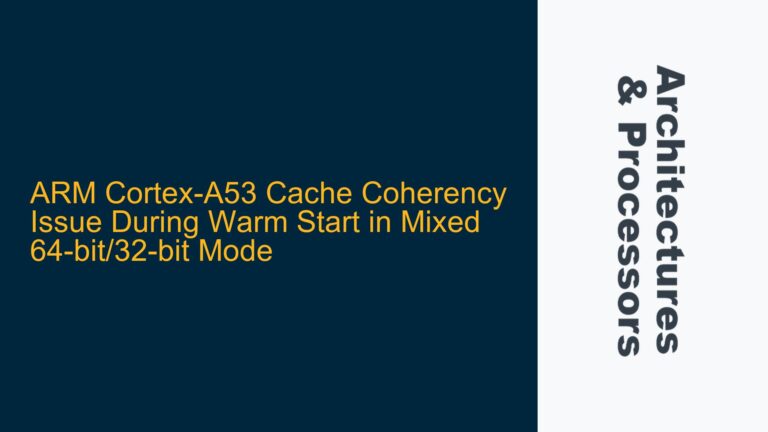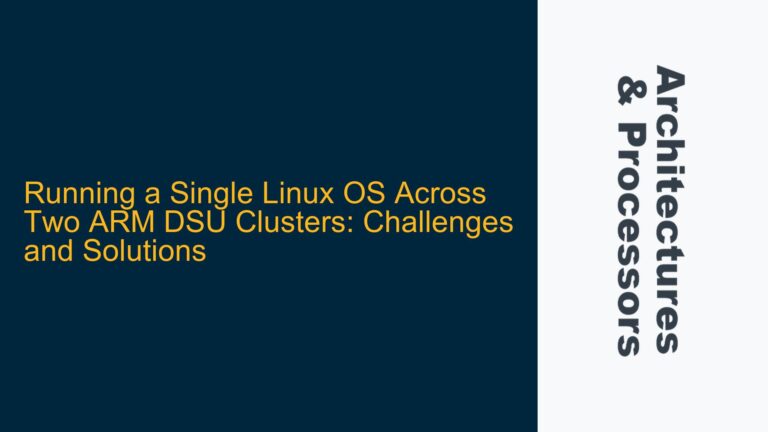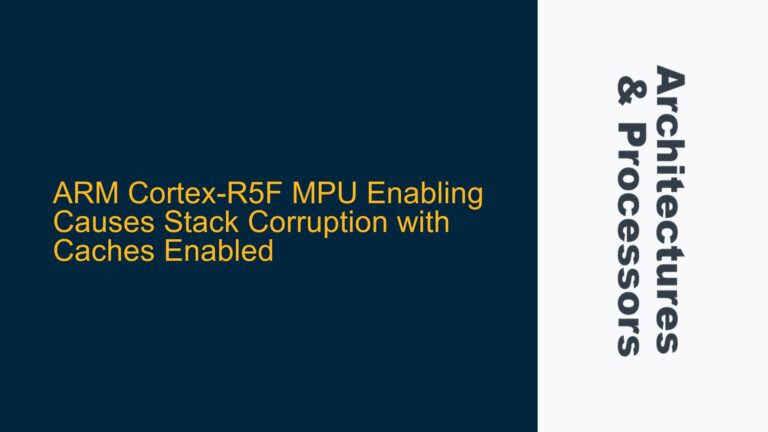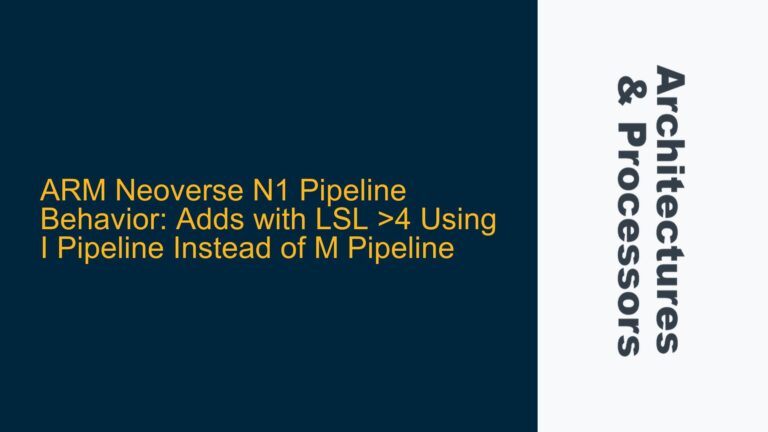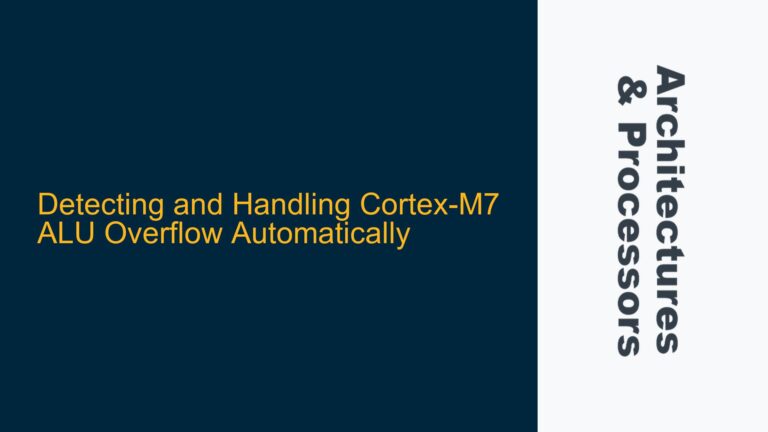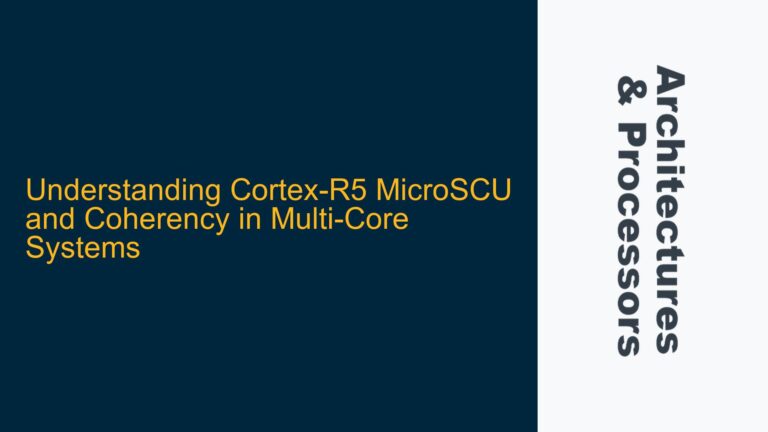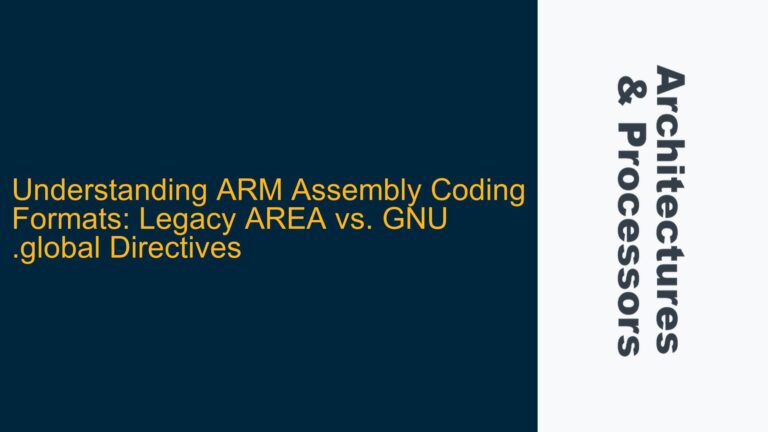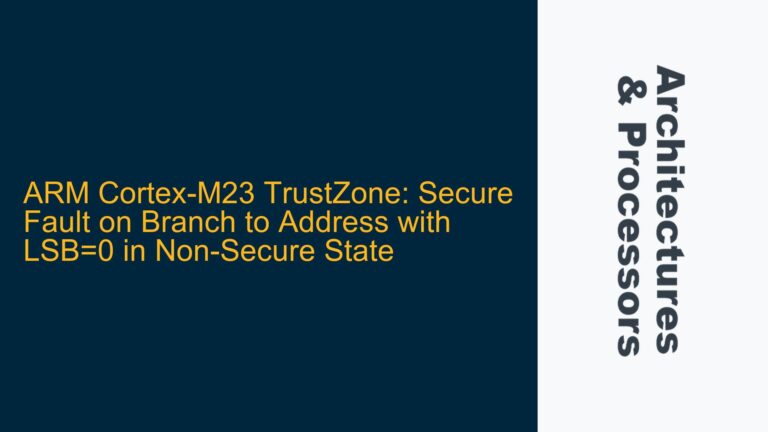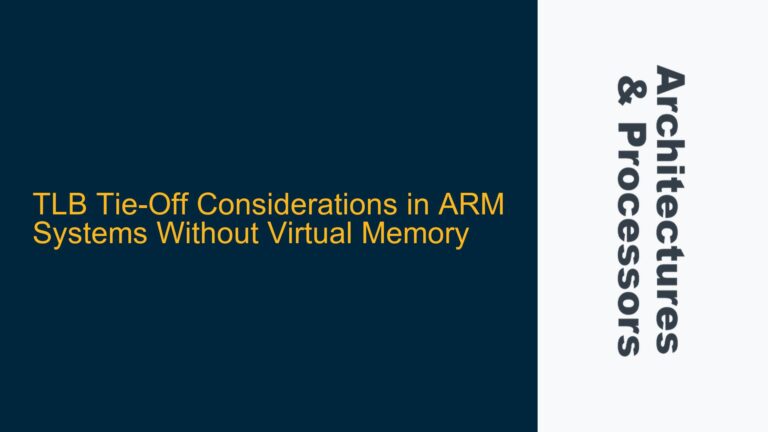High PMU Event Logging Overhead on Cortex-R4 CPU: Causes and Solutions
PMU Event Logging Overhead Impact on Cortex-R4 CPU Idle Time The Cortex-R4 processor, a member of ARM’s real-time processor family, is widely used in applications requiring high reliability and deterministic performance, such as automotive systems, storage controllers, and modems. One of its key features is the Performance Monitoring Unit (PMU), which allows developers to profile…
